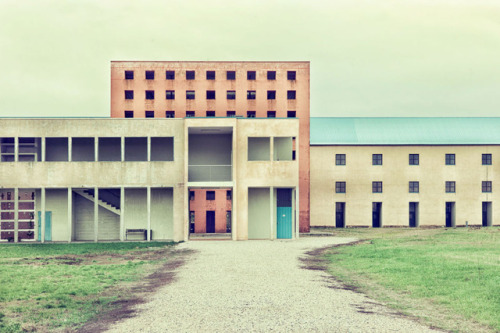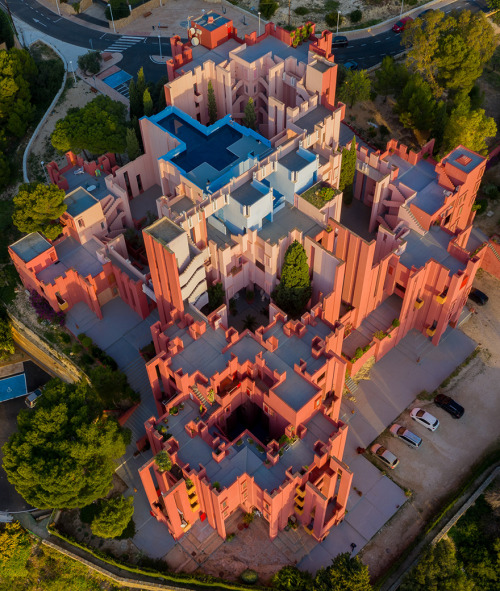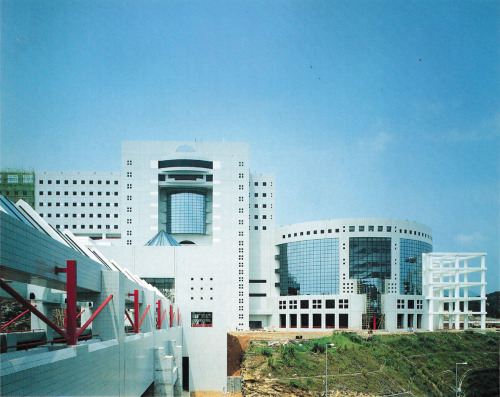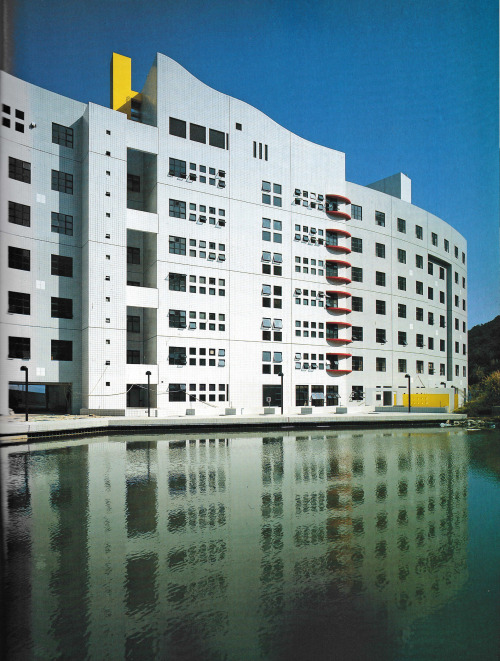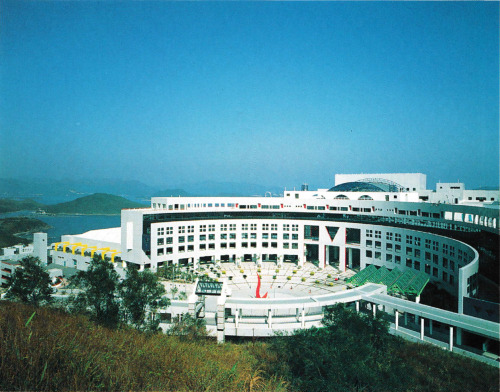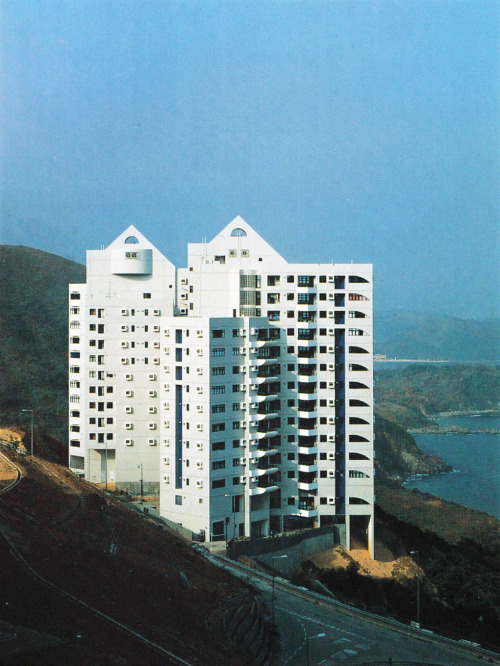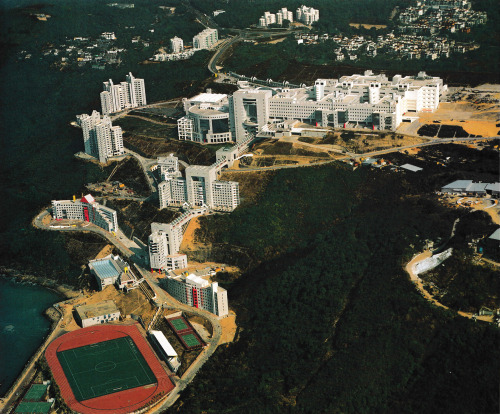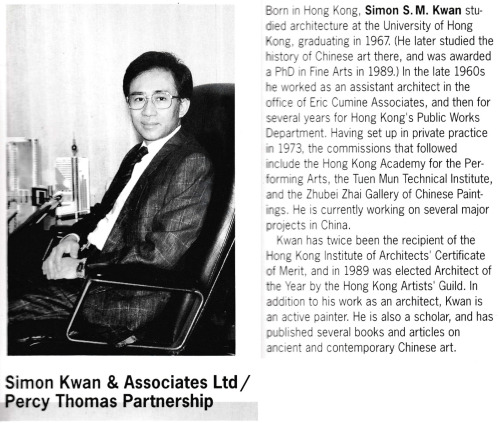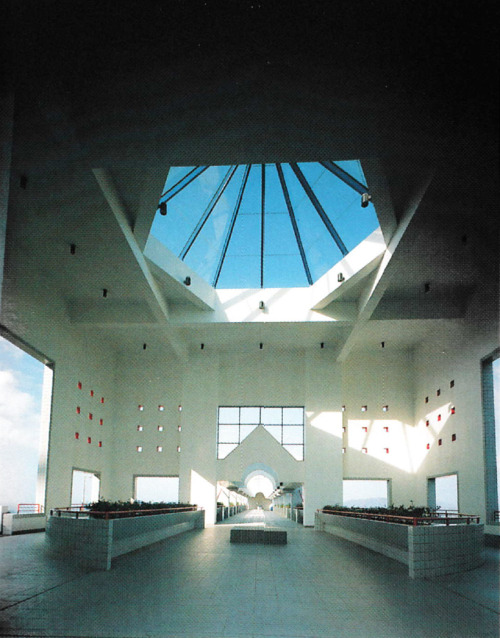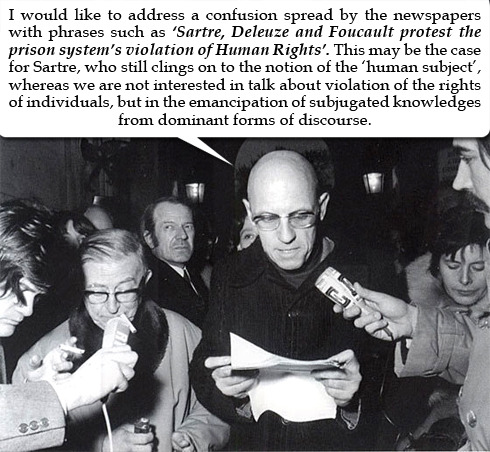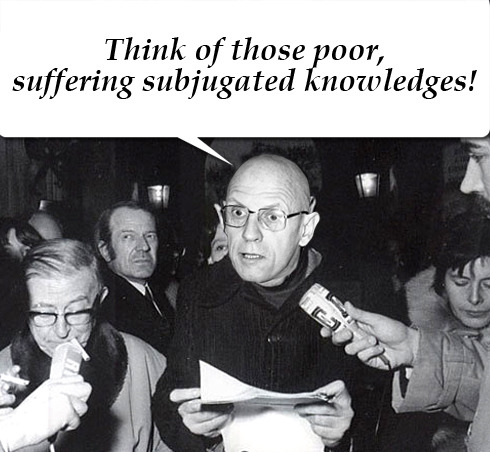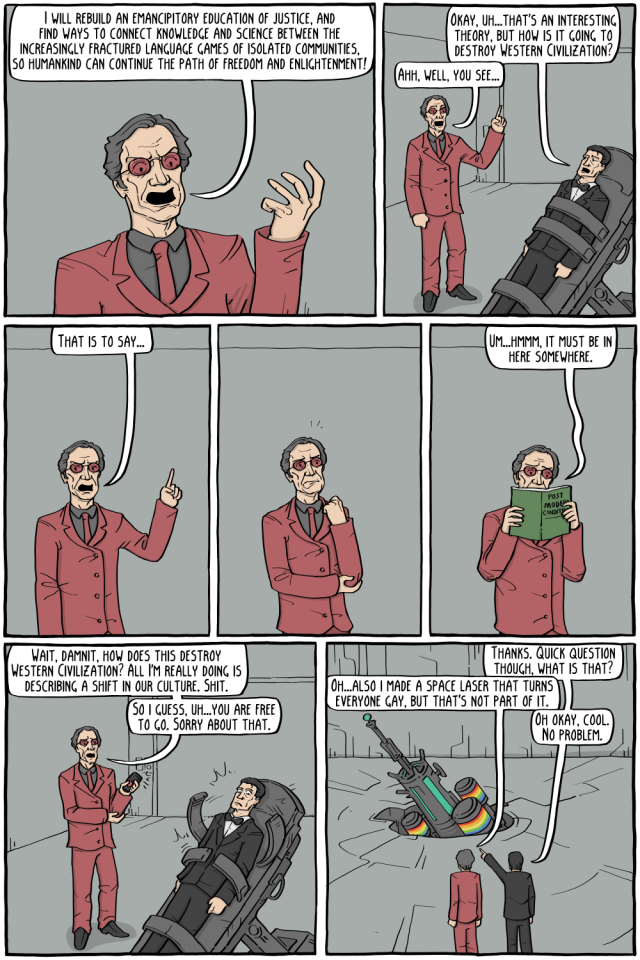#postmodernism
Percy’s Ruins, Reed’s Spring (Books acquired, 5 May 2022)
Percy’s Ruins, Reed’s Spring (Books acquired, 5 May 2022)
A few years ago I passed up on a hardback first-edition copy of Walker Percy’s weird dystopian Southern Gothic Love in the Ruins, and have regretted it ever since, or at least ever since I read a run of his novels back in 2020. I wound I’m reading a digital copy of Love from my local library, loved it, and would put it up there with Lancelot as his best, knowing damn well I still haven’t read The…

upstairsdownstairsandinbetween:
Ricardo Bofill Leví (5 December 1939 – 14 January 2022)
Ricardo Bofill founded studio RBTA in 1963. Its best-known projects include Walden 7 and the brightly coloured La muralla Roja housing estate in Manzanera.
Other key projects from Bofill’s six-decade-long career include the Les Espaces d'Abraxas housing complex near Paris and, in Spain, the Castell de Kafka and La Fábrica – a repurposed cement factory containing the RBTA headquarters and Bofill’s family home.
More recently, his studio completed the sail-shaped W Barcelona Hotel in Spain and Mohammed VI Polytechnic University in Morocco.
Bofill received a number of awards for his work, including the Ciudad de Barcelona Prize of Architecture for La Fábrica and The Israelí Building Center’s Life Time Achievement Award.
He was also an honorary fellow of the American Institute of Architects and the Association of German Architects.
In tribute to his immense body of work, we revisit ,La Muralla Roja (lit. ‘the Red Wall’), a postmodern apartment complex in Manzanera, Calpe, Spain.
It was designed by Ricardo Bofill for Palomar S.A. in 1968 and fully constructed by 1973. It has been ranked among “Ricardo Bofill’s 10 Most Iconic Works”.
In designing the building, Bofill referenced the architecture of North African casbahs and Arab Mediterranean architectural styles. It reinterprets the casbahs in an avant-garde fashion while incorporating the traditional elements like plazas (courtyards), staircases and bridges that connect all the apartments to one another.
As a residency, it holds several amenities such as two commercial stores, a sauna and a restaurant all on the first level. On roof terraces there are solariums and a swimming pool exclusively for use of its residents.
Post link
Hong Kong University of Science and Technology, designed by Simon Kwan & Associates Ltd / Percy Thomas Partnership. Commissioned by the Royal Hong Kong jockey Club. On-site work commenced 1989 (Phase l), 1990 (Phase ll), completed 1991 (Phase l), 1992 (Phase ll).
Scan 1: the exterior. What an enormous project!
Post link
Hong Kong University of Science and Technology, designed by Simon Kwan & Associates Ltd / Percy Thomas Partnership. 1989 - 1992
Scan 2 - the interior / exterior
Post link

My latest illustration for Postmodern Icons is Terry Farrell’s gotham-pharaonic Embankment Place above Charing Cross Station from 1990, available as a range of colourful prints & products https://adamnathanielfurman.com/collections/pomo_icons/embankment-place




Products celebrating the magnificent Isle of Dogs Pumping Station in London by John Outram from 1988
https://adamnathanielfurman.com/collections/pomo_icons/the-isle-of-dogs


Get ur Ionic column hat here: https://adamnathanielfurman.com/collections/all/products/ionic-column-hat


Here’s our illustration of the iconic Blue House by FAT (fashion Architecture Taste) in Hackney from 2004, available on a range of products at this link:
https://adamnathanielfurman.com/collections/pomo_icons/blue-house




Check out our new expanded range of products celebrating the iconic Mc Grath Rd housing by the brilliant Peter Barber, progenitor of the return to London of contextual pomo
https://adamnathanielfurman.com/collections/pomo_icons/mc-grath-road










Check out this collection of Postmodern Architectural Icons Merchandise, all your favourite Pomo monuments beautifully illustrated in bold colours…
Check out this range of arched mugs… £10 each and available in pink, red, blue or black:
Pink
https://adam-nathaniel-furman.myshopify.com/collections/frontpage/products/pink-arches-mug
Black
https://adam-nathaniel-furman.myshopify.com/collections/frontpage/products/black-arches-mug
Blue
https://adam-nathaniel-furman.myshopify.com/collections/frontpage/products/blue-arches-mug
Red
https://adam-nathaniel-furman.myshopify.com/collections/frontpage/products/red-arches-mug
Post link

RICHARDO BOFILL, Espaces d‘ Abraxes, Noisy-le-Grand, Île-de-France, Paris, France, 1978-83

RICARDO BOFILL, Xanadu, Calp, Spain, 1968
“Text ‘ANTIHUMANIST’ to 9999 to make a donation that will allow our team of academics to help a marginalized discourse TODAY!”
Post link
Meanwhile, in France….#20
“The author’s claim that individuals are the ultimate units of moral concern must be rejected, as the occurrence of the word ‘individual’ makes it of course equivalent to methodological individualism, which of course invariably and in any possible context serves to perpetuate the individualist ideology of capitalism”
Post link
Why Jordan Peterson Is Always Wrong
from above link quick quotes:
“According to Peterson, universities are full of ungrateful radicals, determined to undermine the intellectual and spiritual foundations of Western civilization, insistent on advancing a dangerous totalitarian agenda that pushes for “equality of outcome” in every sphere of life.”
* * *
Take Bill C-16, which amended Canada’s Human Rights Law in 2017 to include gender identity and first rocketed Peterson to fame. The primary purpose of the act was to protect trans people from discrimination in areas such as housing. The word “pronoun” doesn’t appear anywhere in the text (…) Nevertheless, Peterson was utterly convinced that C-16 was a totalitarian “compelled speech” bill and made a name for himself outside of Canada for his strident denunciations. C-16 has been on the books for a few years now, and no one has been charged with a Pronoun Crime.
* * *
The only real link between Marxism and the wide array of social movements and schools of thought that Peterson associates with “postmodern neo-Marxism” is that they all feature complaints about the existence of various forms of oppression. The idea seems to be that since Marxists think workers are oppressed due to their economic position and feminists think that women are oppressed due to their position in a gender hierarchy, the latter is a “version” of the former.
* * *
A third, deeper problem with Peterson’s analysis is that despite his objection to “equality of outcome,” he continues to believe in “equality of opportunity.”Yet in a society where wealth can be inherited, this distinction is untenable. One generation’s outcomes necessarily shape the next generation’s opportunities. Having rich parents or poor parents is the difference between having an array of choices and a narrow menu of options.
* * *
Peterson famously asks us to consider the lobster, our genetic relative, and the way it competes to form dominant hierarchies at the bottom of the ocean floor. The bigger lobsters push around the smaller lobsters — why should things be any different in the human world?
It’s winner-take-all in the lobster world, just as it is in human societies, where the top 1 per cent have as much loot as the bottom 50 percent — and where the richest eighty-five people have as much as the bottom three and a half billion.
no one on the Left wants to eliminate all forms of hierarchy. The question has always been how many and what kind of hierarchies might be justified, not whether hierarchy should be permitted at all.
* * *
“Don’t blame capitalism, the radical left, or the iniquity of your enemies. Don’t reorganize the state until you have ordered your own experience. Have some humility. If you cannot bring peace to your household, how dare you try to rule a city? Let your own soul guide you.”
while no one denies that personal problems very often have nonpolitical dimensions, they sometimes have transparently political dimensions, too. Insisting that people exclusively focus on the dimensions of their problems that social progress can’t solve is as foolish as saying that no one should go to the doctor because not all human suffering is caused by curable diseases.
* * *
Throughout Peterson’s books, he frequently describes modernity as a period where the meaning provided by faith has eroded under the assaults of overambitious scientific reason and corrosive postmodern philosophy. The result has been either a cynical withdrawal from the world or a totalitarian impulse to bring meaning back through force.
Peterson avoids asking whether capitalism bears any responsibility for the crisis of meaning he and others have diagnosed.
Peterson’s unwillingness to look at the transformative effect of capitalism while complaining about the decline of sacred meaning might explain why he puts so much stock in attacking relatively obscure French philosophers. By implying that it is an “ungrateful” set of intellectual sophists who are responsible for the current conditions, Peterson can avoid looking very deeply into the tension between his support for traditionalism and his role as a cheerleader for global capital. Far easier to point the finger at Derrida and Foucault than to ask whether an ideology built on the axiom “everything has its price” might have something to do with declining faith in eternal values.
* * *
here is one thing “I” will add: capitalism is failed as much as communism. at least, on an ethical level:
it was capitalism that invented slavery. it was capitalism that created global warming. it was capitalism that invented all sorts of different and “creative” porn genres that involves even children. no way that’s happening in communism.
it WAS and it STILL IS capitalism that wants to sell weapons, that start wars, that exploit other countries. capitalism goes way too fast, x is cool today and x is shit tomorrow. capitalism needs a lot of resources. moar resources! cut more trees! release more shitty gasses to the atmosphere! but also hey, you got resources? YOU GIVE ME YOUR RESOURCES NOW! you don’t have power to stand against biggest capitalistic force, so you get rekt. just like a little shitty lobster.
who is the biggest capitalist? united states. ruled by whom? corporations. clearly, all politicians funded by those corporations or the very capitalist himself like trump becomes the politician. you can vote for x and lose or you can vote for y and lose. yah! great system. but in the mean time don’t stop fighting amongst each other and calling each other names cause that really matters.
once your capitalism as strong as united states’ your corporations will be as strong as theirs too and there will be no way to stop them from ruling the country anymore and starting wars in other parts of the world and politicians will just become their puppets.
Don DeLillo, The Body Artist (2001)
She found it interesting to think that he lived in overlapping realities.
Many things are interesting, fool, but nowhere near true.
She reminded herself she needed batteries for the tape recroder.
She liked to think. What did she like to think? She was having a dumb day and wanted to blame the fog.
Maybe he falls, he slides, if that is a useful word, from his experience of an objective world, the deepest description of space-time, where he does not feel a sense of future direction—he slides into her experience, everyone’s, the standard sun-kissed chronology of events.
Am I the first human to abduct an alien?
The fog was somber and bronzed low-rolling toward the coast but then lost form on landfall, taking everything with it in amoebic murk.
If there is no sequential order expect for what we engender to make us safe in the world, then maybe it is possible, what, to cross from one nameless state to another, except that it clearly isn’t.
She reminded herself she needed batteries. She told herself remember.
It was the kind of day in which you forgot words and drop things and wonder what it is you came into the room to get because you are standing here for a reason and you have to tell yourself it is just a question of sooner or later before you remember because you always remember once you are here.
The thing is communicated somehow.
Post link
Untitledby Kwon Young Woo (1926-2013)
korean ink and paper, 1988
Kwon Young-Woo (권영우) was considered a pioneering figure in the development of Dansaekhwa (or the modern monochrome movement), a Korean painting tradition where artists work predominantly with paper.
Throughout his career, Kwon explored the textural abilities of his chosen medium by scratching, tearing, and layering sheets of hanji (traditional Korean mulberry paper) onto canvas and manipulating the material into three-dimensional relief sculptures which were then decorated with ink painting. Later in his career, Kwon removed any trace of representation and worked solely with white paper.
Kwon’s skill in altering a traditional material to reflect themes of Abstract Expressionism has led to him being recognised as one of Korea’s most groundbreaking artists. Recently, the artist’s works have been exposed to new audiences due to a resurgence in interest of the Dansaekhwa movement.
(source)
Post link
Creative Designs in Furniture, 1991
Viewing Columns designed by Robert Sterba (Sterba Studio)
Post link

